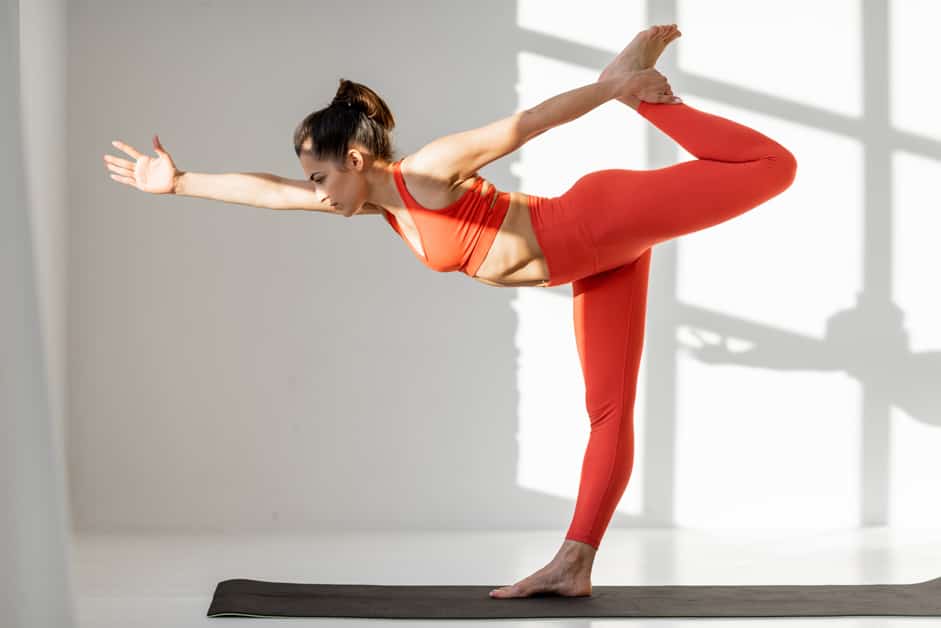Introduction
Balance training is a helpful way to make your knee joints stronger. It can reduce and even stop long-term pain. It does this with a set of workouts. It helps in building strength, flexibility, and better coordination for the knee joint. This could help in avoiding injury and boosting mobility. It can also lower pain in folks who have knee issues because it lets the muscles around the joint work better. With better balance, your body is ready for everyday activities.
When you have knee pain that lasts, it is important to pick exercises that focus on strengthening the muscles there, without stressing out the knees. Balance exercises offer aid, without doing lunges or squats that put stress on the muscles. Balance training gives you more strength, stability, and the power to stand up for longer periods – all of these can help decrease knee pain.
What is Balance Training?
Balance training is essential for physical rehabilitation and to reduce injury risks. It improves balance, stability, and coordination. Plus, it increases core strength, alignment, and postural control, which can help with knee pain relief.
Here, we’ll explain what balance training is and how it can ease knee discomfort.
Types of Balance Training
Balance training is key for rehabilitating knee pain caused by injury or an illness. It helps improve your stability and coordination when walking, sitting, or standing.
There are several types of balance training used for knee pain relief. These include:
- Proprioceptive neuromuscular facilitation (PNF): This uses passive and active movements to help you become aware of body position and develop better muscle control while balancing.
- Core strength and balance exercises: These involve strengthening abdominal muscles while balancing on one or both feet. Exercises include lunges, squats, step-ups, and single-leg stands.
- Plyometric exercises: These are dynamic movements that retrain muscle recruitment patterns and increase power in functional movements like jumps and lunges. Quick jumping actions with both feet provide strength challenges for the quadriceps, hamstrings, calves, and glutes.
- Tai chi: This ancient practice uses slow movements and deep breathing to relax and improve balance control. It also increases joint range of motion and develops postural reactions to external forces like gravity or an uneven surface.
Including balance training in your exercise program has many benefits. You’ll have improved stability and coordination, stronger muscles, improved posture and reaction time, increased agility, improved daily activities and sports performance, less risk of slips or falls, decreased risk of heart attack after activity if at risk, compressed injuries in the knees from long hours on your feet, more energetic workouts with less fatigue during extended physical activities, and increased joint range of motion for better movement patterns when going up stairs without extra stress on the knees.
Benefits of Balance Training for Knee Pain
Balance Training is key for anyone dealing with knee pain. Building up muscles around the knees can reduce agony and increase stability. Balance training has other benefits too, like better proprioception and agility. This can help avoid falls and lessen the odds of hurting yourself.
Let’s dive in and explore the advantages of balance exercises for knee pain:
Improved Stability
Balance exercises can help the knee joint. They make the muscles around the knee stronger and better aligned. This makes it easier to move and lessens pain from injuries or arthritis.
Balance exercises have many benefits for those with knee pain. These include increased stability, less force on the joints, and stronger supportive muscles. Doing this often can reduce knee pain a lot and even stop it. Balance training should be part of a fitness plan for optimal health.
Reduced Risk of Injury
Balance training can help reduce the risk of re-injury and further knee damage. Studies show it reduces pain, improves range of motion, and increases muscle strength. This helps with coordination and agility.
Strengthening and conditioning aids in preventing future injury or rehabbing from surgery. Balance exercises help counteract muscle weakness or instability around an injured knee. This helps “offload” stress onto healthier muscles and tendons.
Improved Muscle Strength
Muscle strength is key to avoiding and soothing knee pain. Balance training is not just about steadiness, it also increases the muscles around the knees for more toughness and steadiness. By practising balance exercises like squats and lunges, the muscles around the knee joint can be reinforced, decreasing danger of injury and strain.
Balancing exercises too upgrade balance and proprioception (the body’s sense of where it is), which can reduce the danger of accidents due to not knowing the location of your limbs. Furthermore, working on strengthening the hip abductors (gluteus medius) while doing balance exercises can help in reducing knee pain due to poor hip mechanics.
Improved Balance
Balance training has lots of advantages for knee pain relief. It grows your proprioceptive ability, which is how you sense joint loading and position. This better balance helps stop falls and other injuries. Plus, you can use wobble boards or Bosu balls to make your muscles around the knee stronger, while also stabilizing your joint.
Balance training also gives you more strength and postural stability, which lessens further injury or discomfort. Lastly, increased stability leads to greater flexibility – this is especially helpful for easing knee pain.
Improved Posture
Balance training, typically done on foam, can aid posture and lessen knee pain. Exercises to improve balance will help you beef up the muscles that keep your joints in place when you move. This reduces stress on your joints, which can stop and relieve knee pain. Improved posture boosts joint range of motion too – another essential factor for managing pain.
No single exercise will work for everyone with knee pain. Yet, adding yoga poses to your routine can be especially useful if you have a weak core and control of balance. Balancing in a pose is more than just strength – you must also learn to activate your core muscles to stabilize the joint before stretching or strengthening. Warrior III is a challenging pose – it gives a good workout and trains balance by requiring you to focus on stability while holding the pose.
Yoga may have a mental benefit too: it can help you to relax and de-stress tense muscles and mind, which lets the body move more freely and can increase range of motion. Combining exercises with all these components – balance, muscle strength, stretching, and relaxation – can be helpful in relieving knee pain due to overuse injuries or long-term inflammation, such as Osteoarthritis.
How to Incorporate Balance Training Into Your Exercise Routine
Balance training is majorly beneficial to your physical health! It can help with posture and even alleviate knee pain. It doesn’t matter what fitness level you are at, adding balance training to your routine is easy. Here’s how to do it and the advantages you can gain:
Start Slowly
If you are trying balance training for the first time, it is wise to go slow. This will help build core strength and balance. Simple activities like standing on one foot with eyes open and closed, standing in a split stance, or single leg bridges (lifting one leg while holding hips in bridge position) are perfect to begin with. Use a wall or chair for support until confident. Start by holding each move for 5-10 seconds. Increase to 30 seconds when ready.
When you have mastered basics, you can do more difficult moves like single leg stepping motions or single lower body multi-directional plyometric jumps. Before you start any balance program, talk to your doctor.
Progress Gradually
When starting a new balance program, take it slow. Do exercises that feel comfortable and gradually get harder. Concentrate on good form and technique, not on speed or quantity.
Start with ankle movements, such as rotating your ankles in both directions, or pointing your toes out and in while standing or seated. Do single-leg stability exercises, like single-leg hip extensions and Tug of Wars. As you become balanced, add multi-plane exercises like band shuffles side-to-side, squats and front kicks.
If you experience pain when doing balance training, it may be a sign that you’re pushing too hard or the exercise is too advanced. Reduce the intensity or take a break until you feel ready to continue.
Progress gradually, build strength over time and focus on proper technique. This way you can enjoy the benefits of balance training without risk of injury.
Focus on Quality
For successful balance training, quality reps and sets are key. Make sure you focus on perfect form. Muscles should be engaged and moves should be controlled and deliberate. Breaks between sets should be taken to let muscles rest and recover. This way, results can be seen in a short amount of time! Plus, joint health and stability will improve and lessen knee pain.
Conclusion
Balance training is a great way to reduce knee pain due to osteoarthritis. It can help strengthen the knee and improve daily function. Plus, it’s cost-effective and relatively easy. Therefore, it is recommended that everyone include balance training in their exercise routine. This is the best way to ensure knee health – whether as a preventative measure or to manage existing joint pain.
Frequently Asked Questions
Q1: What are the benefits of balance training for knee pain relief?
A1: Regular balance training can help strengthen your knee and improve your range of motion. It can also help increase your coordination, reduce pain, and improve your overall stability. Additionally, balance training can help reduce the risk of injury, as it helps you become more aware of how you’re using your knee.
Q2: How often should I do balance training?
A2: This will depend on your individual needs, but generally speaking, it’s recommended that you do balance training at least twice a week for maximum benefit. You should also consult with your doctor or physical therapist to determine the best frequency for your specific needs.
Q3: What are some exercises I can do to improve balance?
A3: Some common balance exercises include single-leg stands, heel-to-toe walking, one-legged squats, and step-ups. You can also do balance exercises with a stability ball or a balance board. Be sure to start slowly and gradually increase the difficulty and intensity of your exercises as you get stronger.





